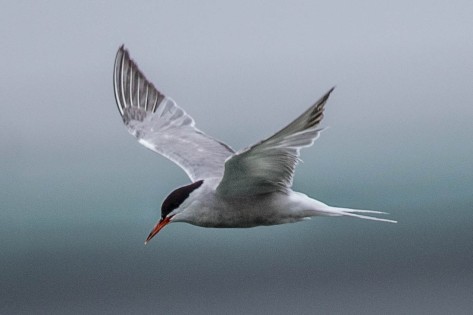
When crossing the Channel and sailing in Britanny, quite often we encountered the northern gannet (Basstölpel, Morus bassanus) far away from land. It is native to the coasts of the Atlantic Ocean and breeding in Western Europe. They search for food during the day, generally by diving at high speed into the sea. Birds that are feeding young have been recorded searching for food up to 320 km from their nest. They dive for fish from between 11 and 60 m. (see https://en.wikipedia.org/wiki/Northern_gannet)



The common tern (Fluseeschwalbe, Sterna hirundo) we observed at the river Odet at Marina Benodet, South Brittany. They fed by plunge-diving for fish in the river. When seeking fish, they flied head-down. They circled or hoverd before diving.




After crossing the foggy Channel with the help of radar, the full moon led us the way into the Antlantic in direction to Britanny (Bretagne). High and long Atlantic waves and good winds provided a lot of fun for us and a few other sailors.







Calais ferry port, the busy connection between France to England: The pilot boat rushes in and out. After having watited for two hours, port control finally allows us to enter the marina, ordering us to keep well to the west. We will do that – until Australia.






A school of maybe twenty bottlenose dolphins (großer Tümmler) in the Channel between England and France near the coast of the Normandy. The family with young and old animals enjoys swimming with the boat. 




Our Sun Odysse 409 Orinoco, build 2011, is ready for the coconut milk journey. Equipped with blue water navigation aids and security systems, the English Channel will be our first challenge: high tides and a lot of traffic in the Street of Dover. After that we look forward to recreational sailing in Southern Brittaney.




Carribean and Pacific Sailing































